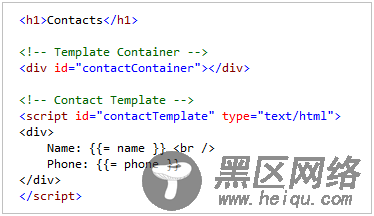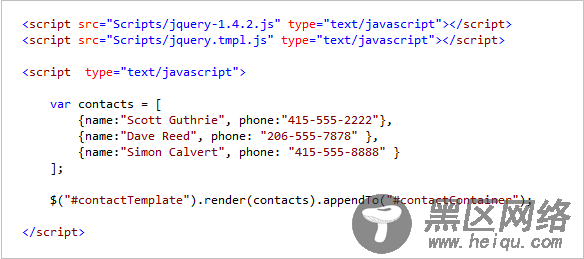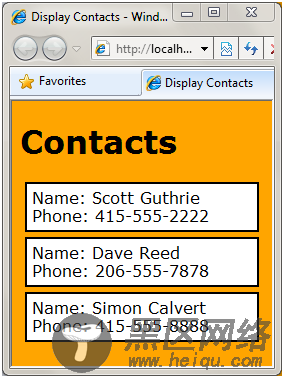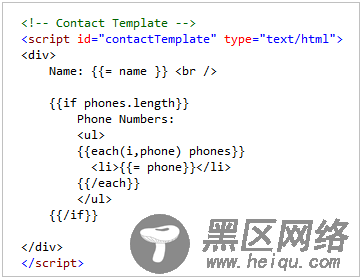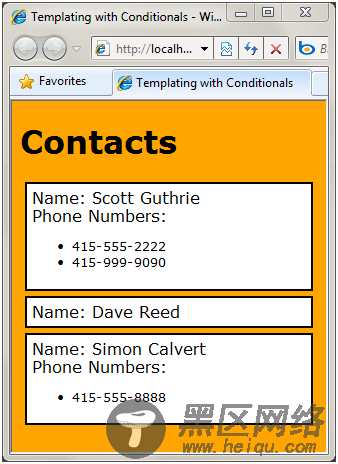Because the jQuery templating proposal is still evolving in response to community feedback, the final version might look very different than the version below. This blog post gives you a sense of how you can try out and use templating as it exists today (you can download the prototype by the jQuery core team at or the latest submission from my team at ).
jQuery Client Templates
You create client-side jQuery templates by embedding content within a <script type="text/html"> tag. For example, the HTML below contains a <div> template container, as well as a client-side jQuery “contactTemplate” template (within the <script type="text/html"> element) that can be used to dynamically display a list of contacts:
The {{= name }} and {{= phone }} expressions are used within the contact template above to display the names and phone numbers of “contact” objects passed to the template.
We can use the template to display either an array of JavaScript objects or a single object. The JavaScript code below demonstrates how you can render a JavaScript array of “contact” object using the above template. The render() method renders the data into a string and appends the string to the “contactContainer” DIV element:
When the page is loaded, the list of contacts is rendered by the template. All of this template rendering is happening on the client-side within the browser:
Templating Commands and Conditional Display Logic
The current templating proposal supports a small set of template commands - including if, else, and each statements. The number of template commands was deliberately kept small to encourage people to place more complicated logic outside of their templates.
Even this small set of template commands is very useful though. Imagine, for example, that each contact can have zero or more phone numbers. The contacts could be represented by the JavaScript array below:
The template below demonstrates how you can use the if and each template commands to conditionally display and loop the phone numbers for each contact:
If a contact has one or more phone numbers then each of the phone numbers is displayed by iterating through the phone numbers with the each template command:
The jQuery team designed the template commands so that they are extensible. If you have a need for a new template command then you can easily add new template commands to the default set of commands.
Support for Client Data-LinkingThe ASP.NET team recently submitted another proposal and prototype to the jQuery forums (). This proposal describes a new feature named data linking. Data Linking enables you to link a property of one object to a property of another object - so that when one property changes the other property changes. Data linking enables you to easily keep your UI and data objects synchronized within a page.
If you are familiar with the concept of data-binding then you will be familiar with data linking (in the proposal, we call the feature data linking because jQuery already includes a bind() method that has nothing to do with data-binding).
Imagine, for example, that you have a page with the following HTML <input> elements:

